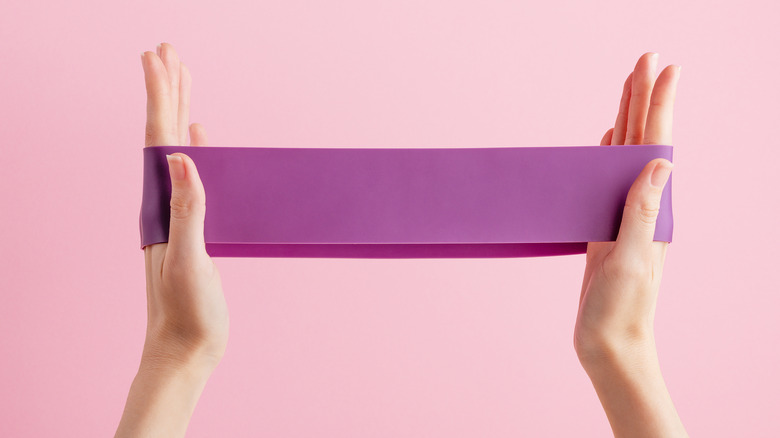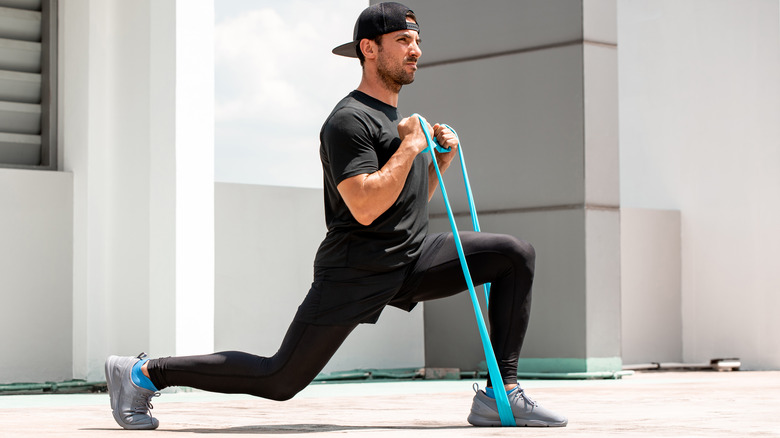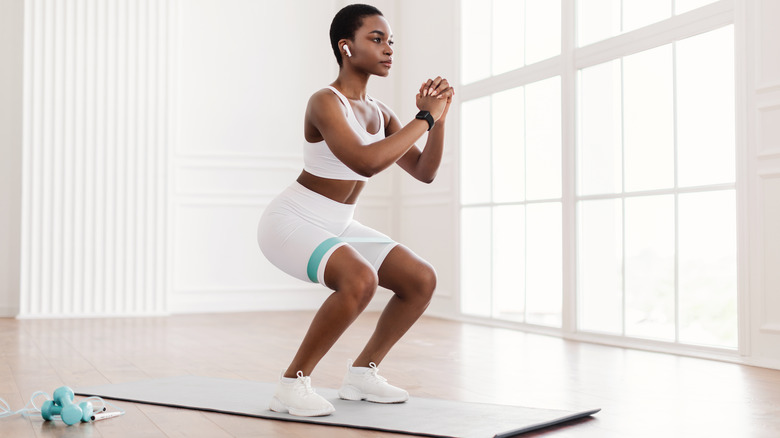Mistakes You're Making With Resistance Bands
When you're looking for at-home workout equipment, the size, price, and potential of resistance bands make them a great option. There are hundreds of movements and exercises that can be performed using them, and they can also allow exercisers to modify or adjust movements on other pieces of gym equipment.
Working on your chin-ups? Hanging one foot in the loop of a resistance band will lighten your load, allowing you to progress in your goal without compromising your form (via Mode Athletics). Want to get a good stretch without snapping something? Putting your sneaker in a resistance band before extending your knee is a great assist.
But just because an accessory may look totally simple doesn't mean it is, however. There are ways you can misuse a resistance band. And just like with a machine at the gym, proper usage is key to avoid injury and to get the best results.
Choosing the wrong tool for the job
The term "resistance band" is used for multiple items, from closed loops (like Booty Bands) to strips of latex (like Therabands) to flexible tubing (like Xering). Think of them like utensils; each serves a slightly different purpose. In a pinch, sure, you could use a spoon to "cut" something, but that's not really what its job is.
When choosing what type of resistance band you want, consider which muscles you are hoping to work (via Verywell Health). A loop that fits around your legs or ankles is great if you want to work two sides of your body at once. Are you barefoot or trying to work smaller muscles? A latex band is great because there's more area for your toes, fingers, or skin to grip, stretch, or move against or with it. Have sensitive skin or tend to wear shorts? A loop made of canvas or fabric may be better for you than latex or vinyl so you won't have that pinched feeling on your skin.
Don't just use one band for everything
More weight, more gainz, right? Not exactly. Resistance bands are all about tension, not weight (via Verywell Fit). A band's tension corresponds to the amount of weight you would be pushing or pulling if it were a solid object. Ideally, you'll have more than one at your disposal, available in a range from light to heavy, so you don't choose the wrong one for the task.
You have some muscles that are stronger than others, and some exercises are familiar to you while others are new. So owning just one band will not serve you. The lighter the band, the less tension you may feel during a shoulder press. Then again, that same band will offer you much more range of motion than a heavier one. If it's around your ankles, suddenly it becomes far more challenging to do a lateral leg raise with that light tension.
"If you're just getting started, stick with your basic long tube with handles," Verywell Fit advised. Once you've got the hang of one band, you can add more to your arsenal.



